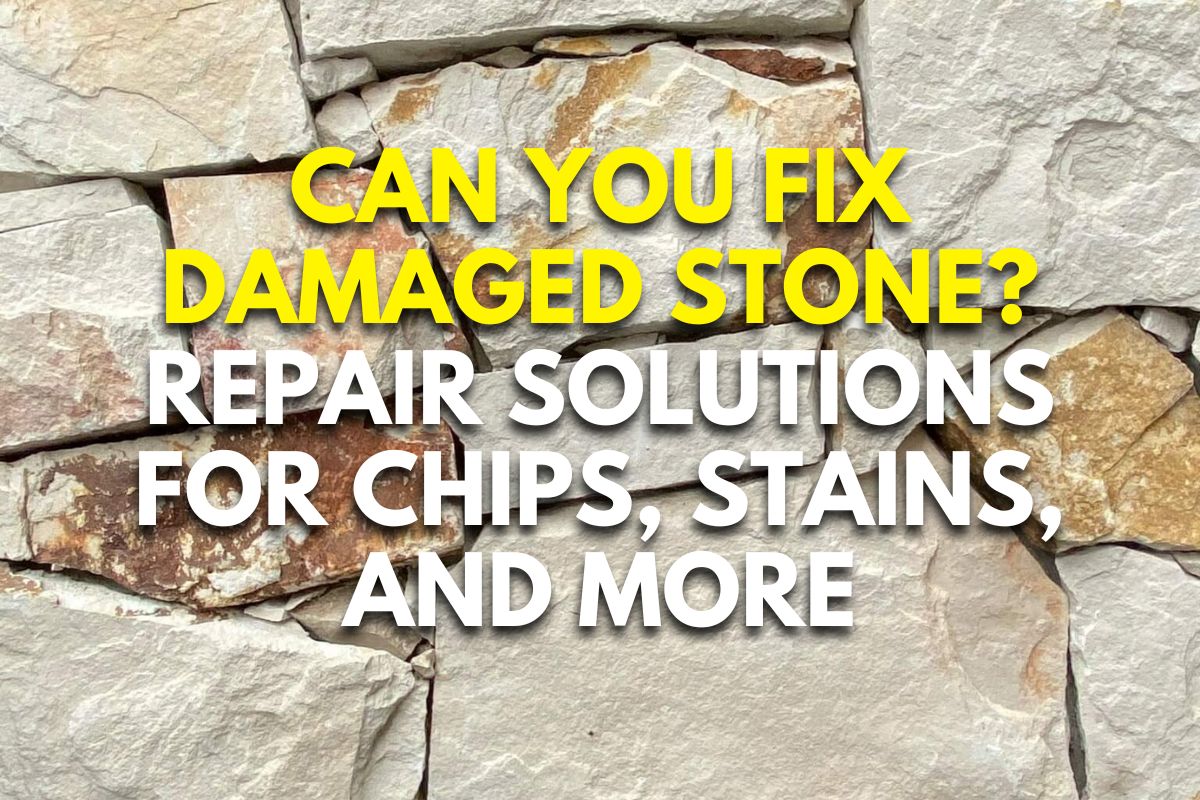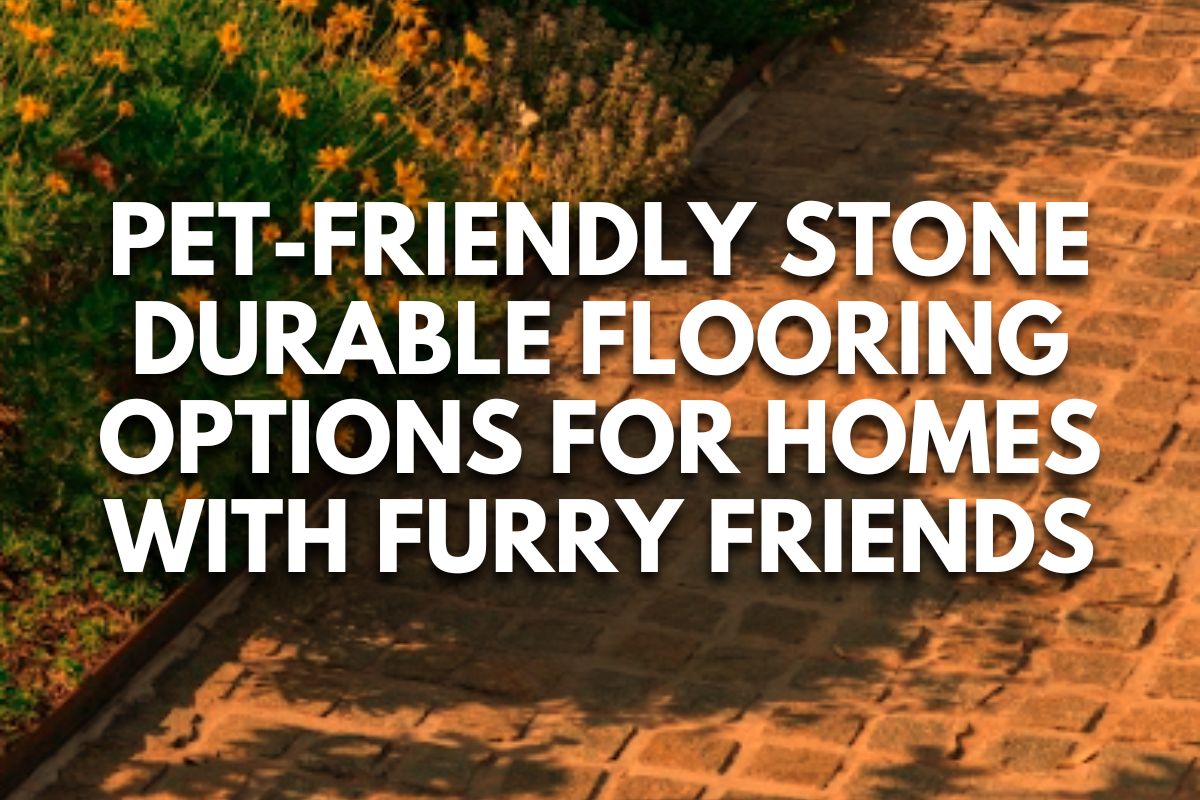Boost Your Home Value: Stone Investments That Pay Off
Homeowners often struggle to choose upgrades that genuinely boost property values.
Investing in the wrong renovations can deplete your budget without offering a solid return, leaving you frustrated and financially strained.
This article explores stone investments that enhance your home’s aesthetic appeal and offer substantial payoffs.
From granite countertops to marble flooring, learn which options will make your property stand out in the real estate market and increase its value effectively.
Exterior Stone Investments
Driveway Pavers
Installing stone pavers for driveways boosts curb appeal and offers remarkable durability.
Granite, with its rugged strength, resists cracking under vehicle weight, while sandstone provides a naturally textured grip that reduces slip hazards.
Cobblestone offers a timeless aesthetic, enhancing the visual appeal of the driveway while being durable enough to withstand frequent use.
Walkway and Pathways
Stone pathways add functional elegance to any home exterior, seamlessly blending with the natural environment.
Flagstone offers a rustic charm and comes in varied shapes and sizes for a unique look, slate’s fine grain and richness in colour provide a more uniform appearance, and limestone is prized for its light colours and thermal properties, keeping the surface cool underfoot in direct sunlight.
Entrance Features
Stone features like columns, arches, and accent walls at the entrance of a home create a grand first impression and significantly enhance curb appeal.
These elements, made from robust materials like travertine or marble, not only add luxury and style but also speak to the solidity and quality of the construction.
Retaining Walls
Stone retaining walls are practical in managing soil erosion and add a structured, aesthetic element to landscape design.
Materials like granite and limestone offer durability against weather elements, while providing a natural look that complements any garden.
Patio Areas
Using stone in patio areas guarantees a durable and stylish entertainment space.
Bluestone and sandstone are particularly popular because of their beauty and resistance to weathering. They provide a safe and attractive outdoor living area that enhances home value.
Outdoor Fireplaces and Kitchens
Incorporating stone into outdoor fireplaces and kitchens extends the living space and increases the home’s resale value.
Stones like quartzite and fieldstone withstand high temperatures and provide a stunning focal point for social gatherings.
Water Features
Stone water features such as fountains and waterfalls can transform an ordinary garden into a tranquil retreat, adding to the home’s serene ambience and appeal.
Using durable stones like slate and river rock ensures these features remain beautiful and functional through the seasons.
Interior Stone Investments
Kitchen Countertops
Quality stone countertops are pivotal in elevating a kitchen’s functionality and aesthetics, enhancing the home’s value.
Granite stands out for its durability and wide range of colours, making it a popular choice for kitchens.
Marble offers a classic look that brings an air of luxury, though it requires more maintenance to prevent staining and etching.
Quartz, being non-porous and resistant to stains, provides a practical yet stylish option that appeals to many homeowners.
Bathroom Vanities
Upgrading bathroom vanities with stone countertops and integrated stone sinks can transform a functional space into a luxurious spa-like environment.
With its high-end look, marble is often chosen for master suites, while quartzite offers similar visual appeal but with more outstanding durability against scratches and etching.
Travertine is another favoured option, known for its earthy tones and natural patterns that add a warm aesthetic.
Fireplace Surrounds
A stone fireplace surround can be a stunning focal point in a living room, adding elegance and warmth.
Marble provides a refined finish, limestone offers a rustic yet sophisticated look, and slate brings a natural, textured beauty that can complement any interior design.
These materials are visually appealing and provide heat resistance and durability.
Flooring
Stone flooring is a significant upgrade that boosts aesthetic appeal and increases a home’s market value.
Polished marble floors lend an elegant touch to formal spaces, while rugged slate tiles are ideal for high-traffic areas due to their durability and slip resistance.
Limestone tiles offer a softer look with subtle textural variations, suitable for various interior settings.
Wall Cladding
Stone wall cladding can transform an ordinary wall into a striking home feature. This addition enhances the visual appeal and adds an element of texture and depth.
Popular stones for wall cladding include sandstone, which has a rustic look, and polished granite, which has a sleek, modern finish.
Backsplashes
Stone backsplashes protect the walls from moisture and stains in kitchens and bathrooms while adding a touch of luxury.
Tumbled marble tiles for a more traditional kitchen or smooth, glossy quartz backsplashes for a modern design are both popular choices that complement the stone countertops.
Decorative Accents
Using stone for decorative accents such as window sills, baseboards, or crown moulding can enhance a home’s interior luxury.
These elements, crafted from materials like quartz or limestone, provide durability and a consistent aesthetic that ties together the space’s design elements.
Outdoor Living Spaces
Patio and Outdoor Kitchen
Creating functional and attractive outdoor living spaces, such as patios and outdoor kitchens, significantly enhances the value of a home.
Bluestone is a popular choice for patios due to its durability and natural aesthetic that blends seamlessly with outdoor environments.
Granite, with its heat resistance, is ideal for outdoor kitchens, while porcelain tiles offer a modern look with minimal maintenance requirements, resisting stains, and weather effects.
Pool Decking
Using stone for pool decking enhances the area’s safety with its non-slip properties and adds to its overall durability and aesthetic appeal.
Travertine is favoured for its cool-to-the-touch feature in hot weather, making barefoot comfortable.
Sandstone and limestone are also excellent choices, offering a variety of textures and colours that resist fading and withstand the rigours of pool chemicals and sun exposure.
Landscaping Features
Incorporating stone landscaping features like retaining walls, garden borders, and decorative rocks can dramatically transform an outdoor space.
Natural stone boulders create focal points in gardens, while stacked stone walls support elevated beds. Gravel pathways define spaces and facilitate drainage, enhancing functionality and visual appeal.
Fire Pits and Seating Areas
Stone fire pits and surrounding seating areas are functional, providing warmth and a cooking source. They also serve as a central gathering spot in the garden.
Materials like flagstone offer a flat, durable surface ideal for seating, while fire-resistant stones like granite ensure safety and longevity.
Water Features
Adding a stone water feature, such as a fountain or waterfall, introduces a visual and auditory element of tranquillity to outdoor spaces.
Using stones like slate or river rocks can harmonise these features with the natural landscape, providing a serene retreat within your property.
Arbours and Pergolas
Integrating stone bases for arbours and pergolas enhances stability and adds timeless elegance.
This use of stone anchors the structure visually and physically and elevates the garden’s aesthetic.
Outdoor Lighting Fixtures
Incorporating stone elements in outdoor lighting fixtures offers aesthetic charm and increased durability.
Stone columns or bases for light fixtures can match the other stone elements in the garden, creating a cohesive and elegant outdoor space.
Maintenance and Longevity
Maintaining stone investments properly is crucial for preserving their beauty and extending their longevity, ensuring that these features add value to your home over time. Here are key maintenance practices to keep stone installations in optimal condition:
- Regular Cleaning: Regular cleaning is essential to prevent dirt and debris accumulation, which can wear down the finish and cause scratches on stone surfaces. Use a soft cloth or a brush with soft bristles, mild detergent, and warm water for routine cleaning. Avoid harsh chemicals, acidic cleaners, or abrasive tools, as these can damage the stone’s surface.
- Sealing: Most natural stone types are porous and require sealing to protect them from stains and moisture absorption. Sealing creates a protective barrier that minimises the stone’s porosity and protects it from spills and environmental elements. Depending on the stone type and its exposure to traffic and weather, sealing should generally be performed every one to two years.
- Professional Maintenance: Professional maintenance is recommended for more intensive cleaning, restoration, or repair. This includes dealing with deep stains, chips, or cracks that can occur over time. Professionals have the right tools and expertise to restore stone features without further damage, maintaining the stone’s aesthetic and structural integrity.
- Preventative Measures: Utilize floor mats and furniture protectors to reduce wear on stone flooring from foot traffic and furniture movements. Cover stone surfaces outdoors during extreme weather conditions to prevent weathering and erosion.
Return on Investment (ROI)
Stone features in a home can significantly influence its market value and appeal, offering a strong return on investment (ROI) when it comes time to sell.
Including high-quality stone elements like granite countertops, marble flooring, or stone-clad fireplaces can elevate a property’s perceived value, attracting buyers looking for a blend of durability, luxury, and style.
- Increased Property Value: Stone enhancements typically offer one of the best ROIs among home improvements due to their longevity and timeless appeal. They are often seen as a high-end upgrade that considerably raises a home’s market value. For example, homes with granite countertops or marble floors can command higher asking prices because these materials are aesthetically pleasing and functionally superior.
- Resale Appeal: Homes with well-maintained stone features often sell faster than those without. Buyers are drawn to the unique charm and quality that stone adds, perceiving these homes as better maintained and more luxurious. This allure can justify higher selling prices and make the property stand out in competitive real estate markets.
- Justifying Higher Selling Prices: When buyers assess a property, stone features prominently enhance the home’s appeal, enabling sellers to set higher prices. Stone’s durability and easy maintenance also reassure buyers of lower future costs, making a compelling case for a higher initial investment.
Conclusion
Stone investments enhance your home’s beauty and functionality and significantly boost its resale value.
Consider integrating high-quality stone features to elevate your living space and attract future buyers.
Start planning your stone upgrades today and witness their lasting value to your property.







